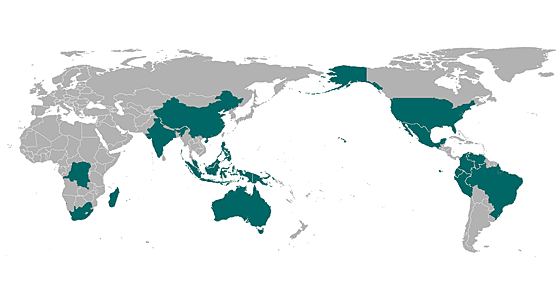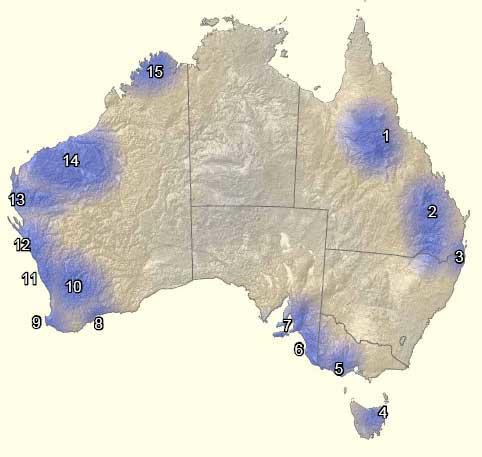Introduction
Various species are faced with the danger of extinction around the world. Conservationists have come up with an approach that deals with the problem of probable extinction and biodiversity loss by coming up with ‘hotspots.’
What is an “endemic species”? Why is “endemism” used as a measure of habitat irreplaceability?
Endemic species are those species that are present in a particular ecological site only.
Endemism is used as a measure of habitat irreplaceability because endemic species are only found in one place, and as such, the site that they live in cannot be replaced at any cost.
Why are vascular plants and vertebrate animals used to assess the degree of endemism of an area?
Vascular plants and vertebrate beings are used for the simple reason that there is plenty of information relating to them.
For a region to qualify as a Hotspot, what characteristics must it have?
To be considered a hotspot, an area must satisfy two parameters: the area must have a minimum of 1,500 species of vascular plants as endemics and must have suffered a minimum of loss of at least 70% of its initial habitat.
What percentage of the Earth’s land surface is presently covered by the 25
Hotspots originally identified in 1999? How much of the original habitat has been lost from these regions?
As of 1999, the twenty-five hotspots covered a paltry 1.4% of the earth’s surface. This was after losing a whopping 87.7 percent of its original area.
What percentage of terrestrial vertebrates and vascular plants are found in the 25 Hotspots?
The twenty-five hotspots have around 44 percent of the total plants in the world and 35 percent of the total terrestrial vertebrates.
What area is covered by the Wallacea Hotspot? Why is this Hotspot particularly important for birds? Wallacea is also home to which impressive reptile?
Wallacea hotspot covers a land area of 338,494 square kilometers.
The Wallacea hotspot is significant, especially for birds, as it is the second largest after Tropical Andens in terms of bird endemism.
Wallacea is home to the world’s largest lizard, known as the Komodo dragon.
What is the threatened primate endemic to Sundaland Hotspot? What are the causes of continued habitat destruction?
The orangutan is an endangered species that lives in the Sundaland hotspot.
This hotspot has continuously been destroyed through massive growth of industrial forestry and international trade in animals, which targets monkeys among other animals. The Southwest Australia hotspot has two thousand, nine hundred, and forty-eight plant species.
The Southwest Australia Hotspot is renowned for its endemic plant diversity. How many endemic plant species are there? How many extinctions have been recorded? The endangered Southern Dibbler and the critically endangered Western Swamp Turtle are species from this region, but how many other threatened vertebrate species are listed?
Southwest Australia hotspot has recorded two extinct species.
Other than Southern Dibbler and western Swamp Turtle, there are twelve more vertebrates that are threatened with extinction.
The Guinean forests of West Africa are home to more than a quarter of Africa’s mammals, including more than 20 species of primates. What are the activities that are threatening species like western chimpanzees and pygmy hippopotamus?
In the Guinean forests of West Africa activities like timber harvesting, mining, hunting and demographic growth are menacing species like western chimpanzees and pygmy hippopotamus.
Which Hotspot has the most recorded extinct species? Why? What makes these types of areas particularly vulnerable to extinctions?
Tropical Andes has recorded the highest number of extinct species due to increased mining, timber extraction, oil exploration and narcotics plantations.
What are the other countries are megadiversive? Provide a map as part of your answer and why are they considered so biologically important?
Other ‘megadiversive’ (as seen on the map below) are The Congo, Madagascar, South Africa, China, India, Indonesia, Malaysia, Papua New Guinea, Philippines, Brazil, Colombia, Ecuador, Mexico, Peru, United States, and Venezuela.

These areas are considered biologically significant principally because they are home to more than two thirds of all known life kinds and most of the tropical rainforests, coral reefs and other priority mechanisms.
Choose one of the 15 listed hotspots in Australia. Which did you choose and what are the threatening processes for this biodiversity hotspot?
Out of the fifteen hotspots in Australia, I have picked Fitzgerald River Ravensthorpe in Western Australia.
Fitzgerald River Ravensthorpe hotspot faces several threats which include divisions in the habitat, brutal beasts, and unsustainable pressure on pasture land as well as weed attack. Most of the species are localized and hence are very vulnerable to fire. The wetlands are greatly affected by sedimentation while the rest remaining areas of vegetation area are affected by salty waters.
Are all 15 spread evenly across the continent? Why do you think they occur where they do?

The hotspots are not evenly distributed but are found within the coastal region of Australia.
The hotspots occur along the coastal strip because most of the endemic species of plants and vertebrates are found along the coastal areas of Australia.